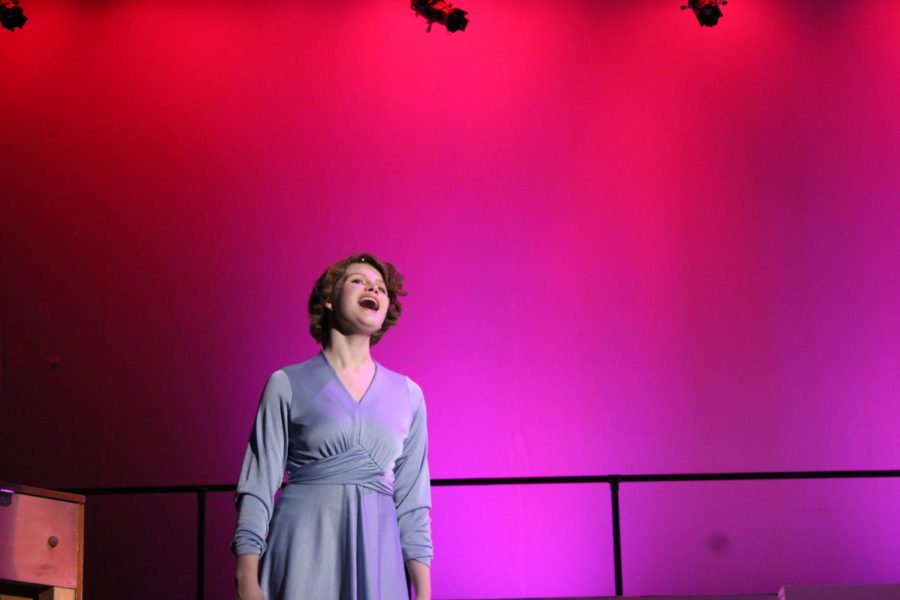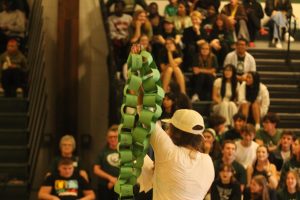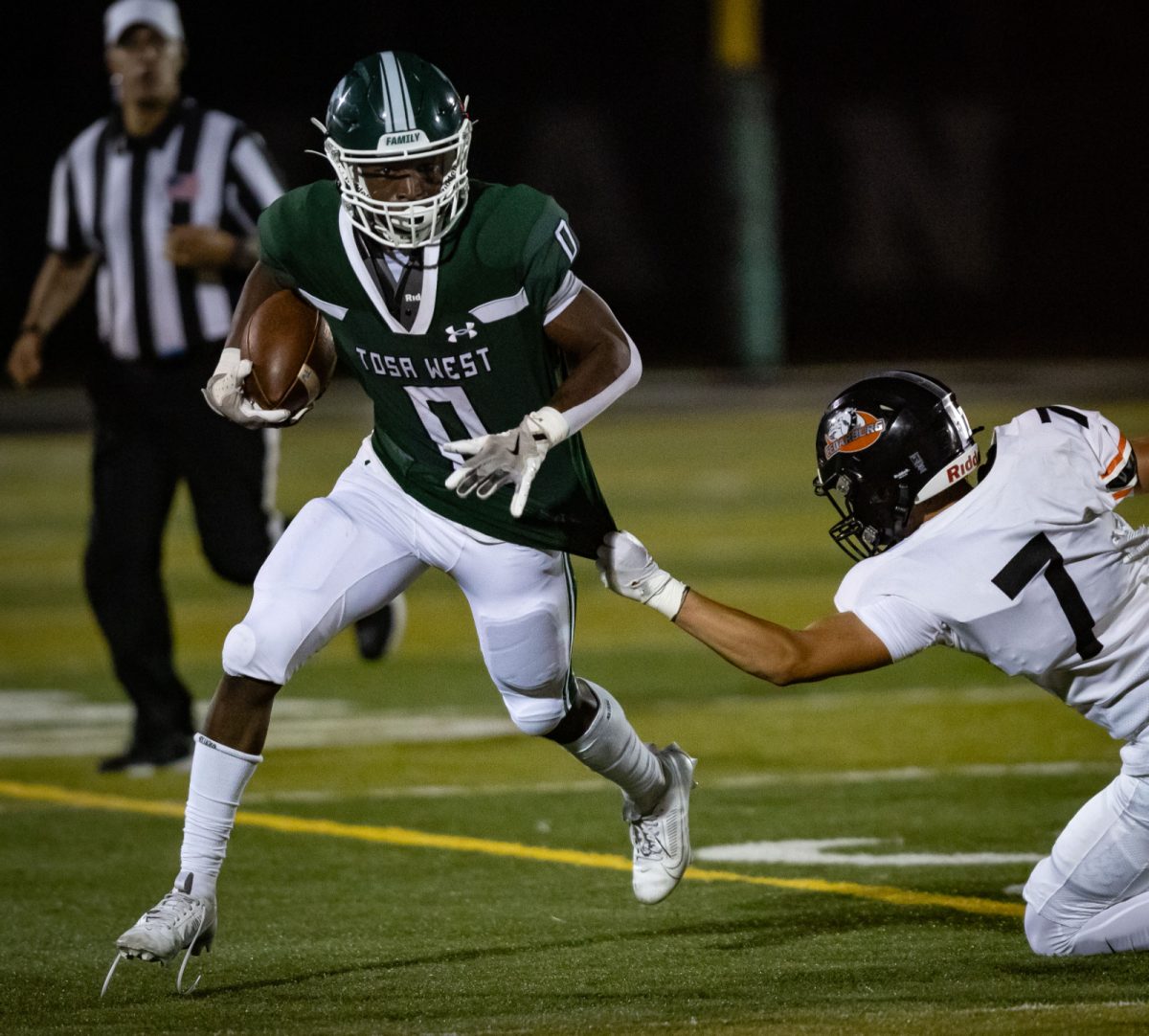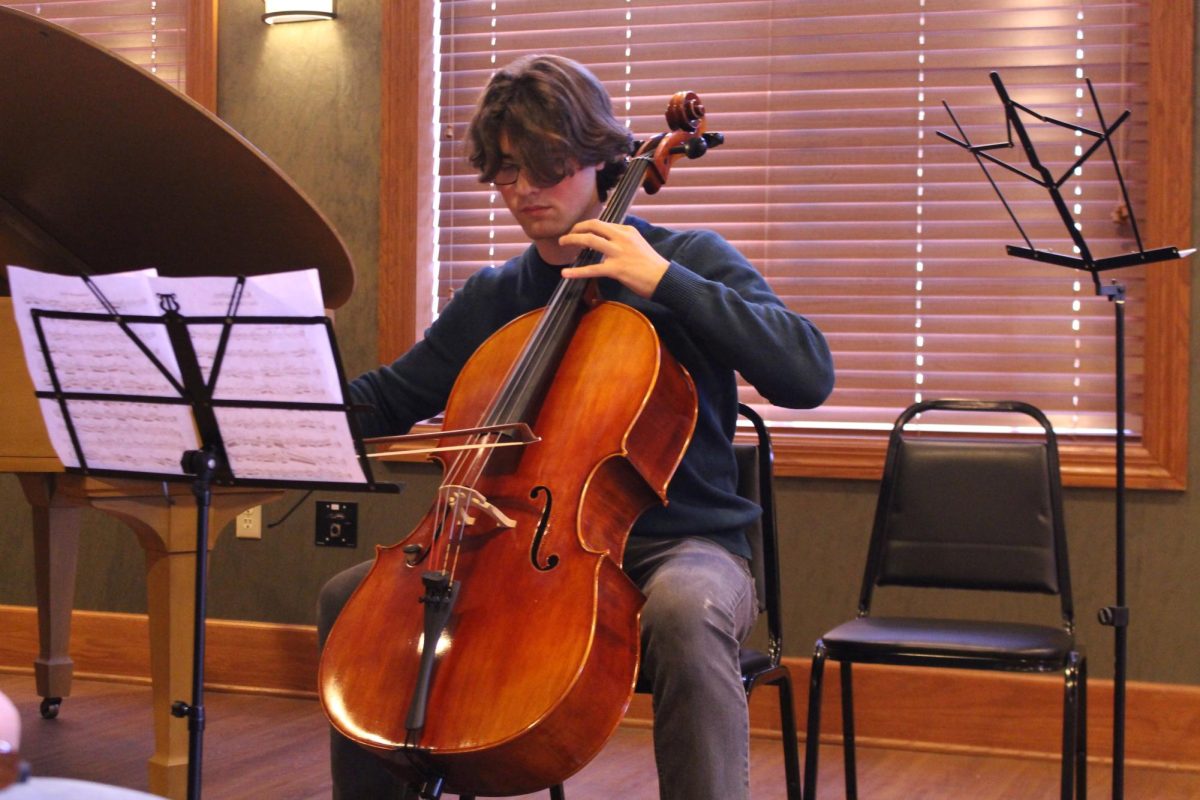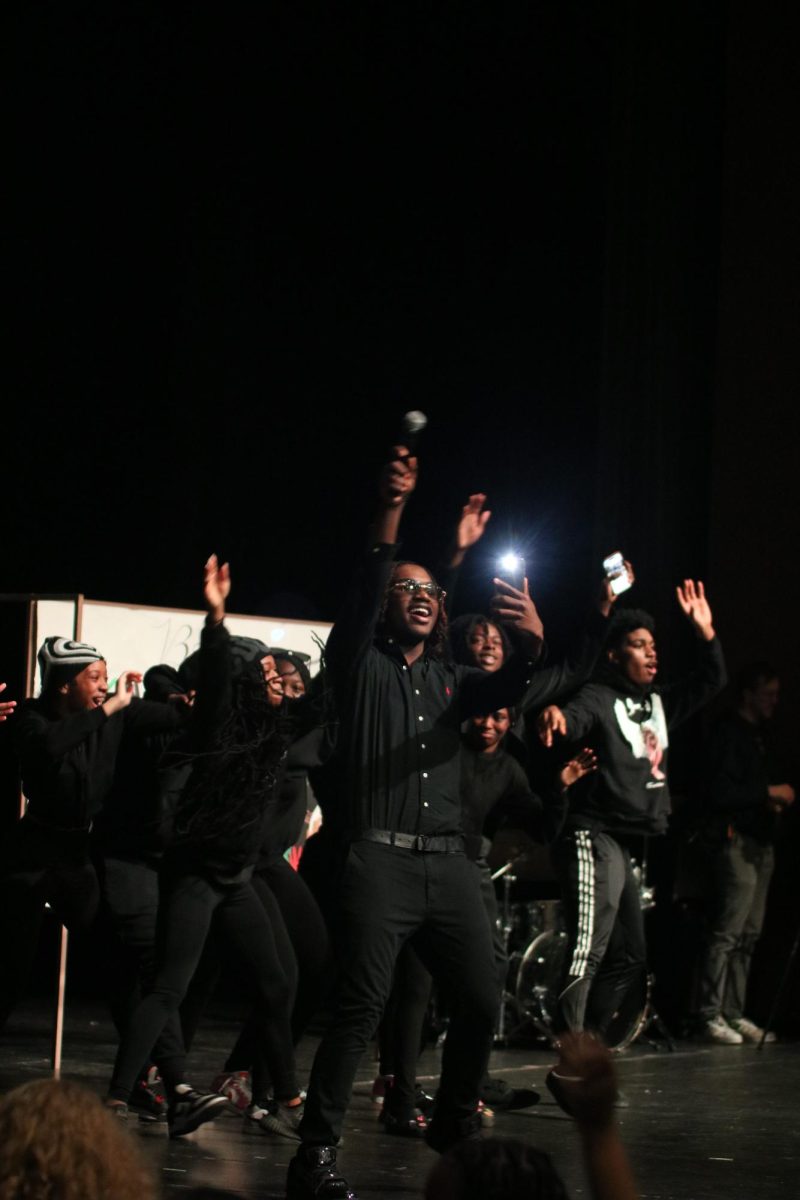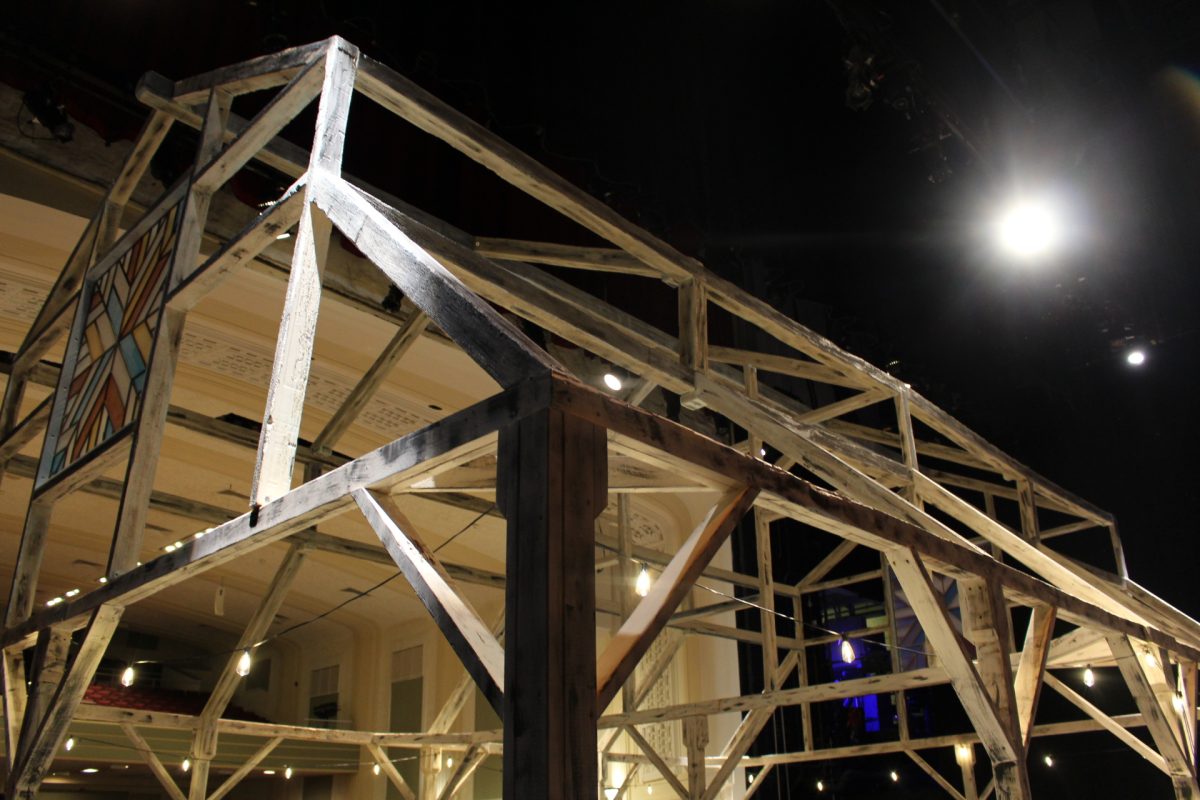Behind the Scenes of Singin’ in the Rain
January 4, 2023
“I love the creative collaboration that happens between staff and students. When we all understand the goal in mind, it is so fun to see the different ideas that everyone comes up with to make the show happen,” said Colleen Jaskulski, the theater director at Tosa East.
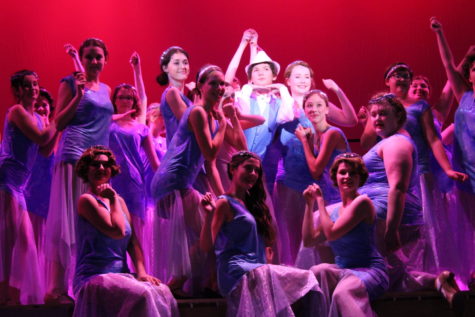
Singin’ in the Rain: a story packed with drama, dancing, and song. At Tosa East, students of various talents and ages come together to create a two and a half hour show, even going so far as to create a working indoor rain system specially for the performance. After last year’s spring musical, The Addams Family, expectations for this winter’s musical, Singin’ in the Rain, were high. Needless to say, these expectations were met, if not exceeded; every Tosa East Player involved toiled to make sure that this classic musical went perfectly.
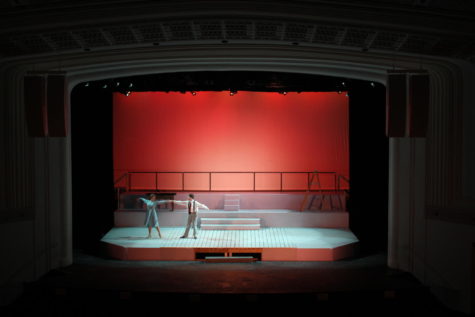
A Theatrical Classic
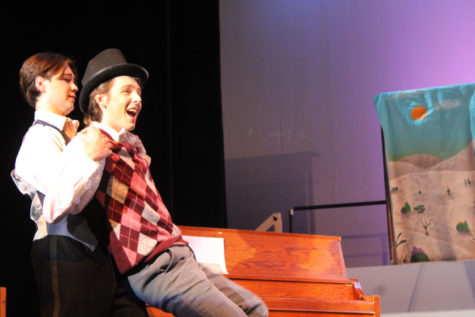
Singin’ in the Rain, a classic musical set in the late 1920s, had its first debut in 1952. Ever since, it has been regarded as one of the greatest musicals ever written. This show centers around three main characters; film actor Don Lockwood, stage actress Kathy Selden, and musician Cosmo Brown. The film is set in the bustling scene of Hollywood, an evolving world where silent film actors, like Don, struggle to keep up since the introduction of the talking picture. A timeless story of romance, drama, and Hollywood fame, it certainly serves as a perfect candidate for an entertaining musical to perform at East. This musical is a particularly memorable one to the theater director, Colleen Jaskulski, “it is one of my favorite musicals of all time… so it will always hold a special place on my roster of shows.”
Considering the musical’s classic and otherwise “older” background, it posed quite a few challenges for the Tosa East Players. Jaskulski states “Singin’ in the Rain is the first ‘classic’ musical I’ve directed at East, so it brings up bigger challenges in terms of the acting, singing, and dancing styles.”
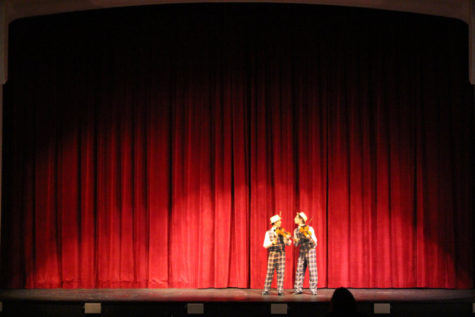
Singing, Dancing, and Acting in the Rain
It’s no secret that Singin’ in the Rain is heavy on tap dancing, and singing styles from the 1950s are largely different from modern methods. How did everybody in the cast and ensemble manage to learn these iconic moves from this classic?
Elizabeth “Lily” Nielsen, the actress who had starred in the role of Kathy Selden, explained her personal methods in working up confidence when it came to the performance preparation. “When getting into character, I try to completely clear my mind a few seconds before I go onstage, then when I go into a scene, I let the initial environment and my lines set the tone. From there, I just naturally start to play the character,” says Nielsen.
Nielsen highlights one of her favorite numbers from the show, recalling, “I do a dance to a song called ‘You Were Meant For Me’ that is just so beautiful, and learning it was so much fun. That was a really fun moment. Getting to work with the guys who play Cosmo and Don was really fun too; we all have such great chemistry and I love them very much.”
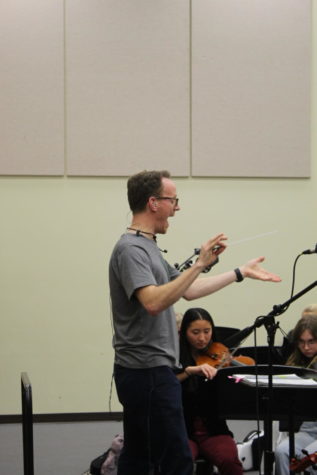
Aside from the few main characters, an equally important part of the cast are the ensemble, who learn numerous dance numbers and songs. When asked about the challenges of the ensemble performances, member Miriam LaWall-Shane remarks details that she hadn’t expected in rehearsing for her performance. She says, “An unusual part of this was the tap dancing. I love dancing in theater but I never expected that I’d need to learn how to tap a week before auditions. The worst part has probably been staying at school really late and having achy knees after dancing for three to five hours.”
LaWall-Shane also describes the process of getting into costume during the show.
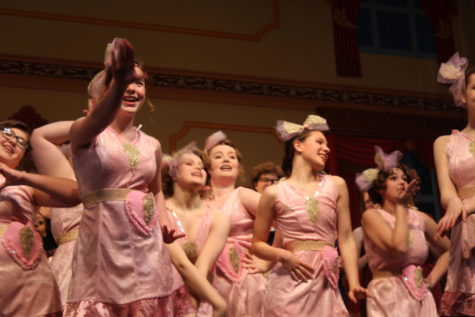
“Before a show… we all have to do our hair and makeup and get into costume, but this prep time generally includes belting show tunes that echo through the entire theater. Personally, I also like to take a few minutes backstage to get immersed into my character, and run through the quickest way to do my costume changes in my head,” she explained.
When it comes to the work environment, both the cast and ensemble had positive things to say about everybody involved.
“The thing that I enjoy most about the work environment is that everyone cares about each other and we all help each other out. Aside from before show rushing and quick change madness, there’s always a pretty chill vibe,” LaWall-Shane added.
Setting the Stage
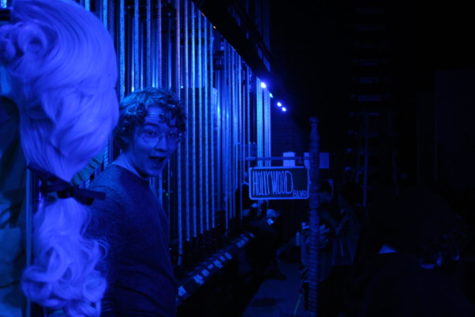
Behind every successful song performance, perfectly timed spotlight, and beautifully decorated set, there are the theater’s student-led crews at work. The many crews collaborate to create a perfect stage for the actors, arranging the set so that every transition plays out smoothly. Every crew has its respective responsibilities and equally plays important parts in the show’s production.
Lights crew centers around the lighting on the stage, the movement and timing of spotlights, and making sure that the lights fit the mood of the performance onstage.
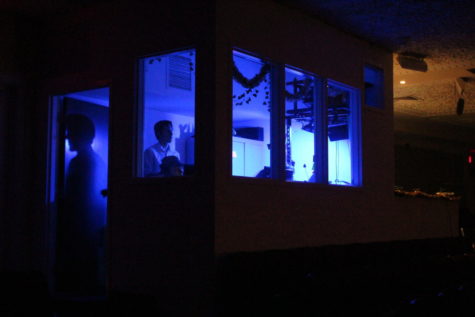
The lights crew head, Jove Stueber, describes his role in the musical, “I planned the lighting plot that we would need for the show and coordinated our crew to put everything together. This included consulting with other crews about how they would impact the show and what would help them and how they could help us. An example would be our rain system and how we were able to see the rain during shows with the help of our … side light. Once we reached our tech week, me and my mentee, Zack Wozniak, helped cue and design the show.”
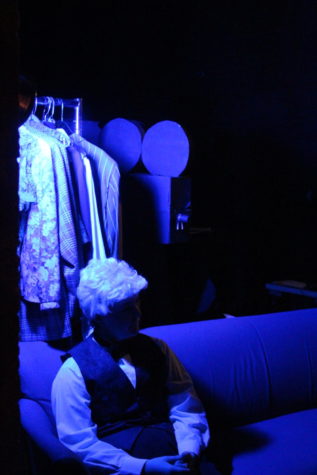
Stueber also mentioned the significance of lights when it comes to the performance. He says, “Lighting is always there but hopefully never realized, it’s an odd way of working. When things go wrong, too much stuff going on or too little, it can be distracting from the show.”
But the lights crew isn’t the only crew that is busy during the show’s production; the props crew works hard to make sure that the musical has all of the items they need to put on a show.
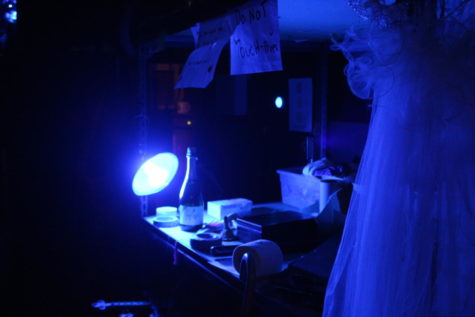
Zoe Wozniak, the props crew head, explained, “[Props crew] went through our prop shop marking down the things we had, needed to make, and then needed to buy. Then came the time consuming process of designing, making, and painting the props that we didn’t already have, or needed to adjust to make it accurate to the show. This usually takes about a month or so. During our first run through, we need to cue every prop—what scene/act, who gets it, and what side of the stage it comes on and off from. We cue everything, make our script, and then we’re ready for the show.”
Wozniak also notes the struggles the crew faced during the last couple of weeks before the show’s opening, saying, “We had to be so creative when it came to figuring out how to make things. For example, the handheld cameras…Tech week is so hectic, and I had to manage and teach actors and my crew how to help out and make things, and I had my own things to make.”
Despite these challenges, Wozniak still compliments the fun working in the props crew. “Work days are some of the best times we have. We listen to music, paint, screw, and saw. You can really connect with people if you are working towards the same goal. Whether we are burning ourselves with hot glue, or having dance parties backstage, the community is what makes props so fun!”
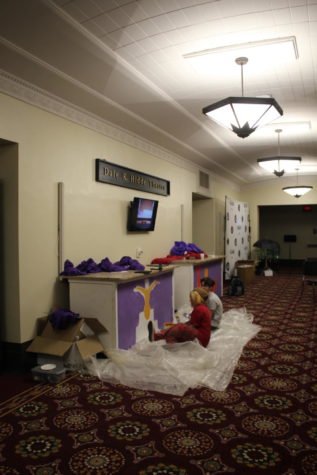
When it comes to the set, construction has a lot to say about the process of building it. Tabatha Hoverman, one of the crew heads for construction, talks about the hardships of the set’s construction as well as what is generally done in the construction crew. She says, “As one of the construction crew heads, I went over the plans and drawings for all of the set pieces with one of our tech directors, Spike Kuen, and with him and the construction crew and some very helpful actors, [we] began to build the set. We started with the big stage set up. The raked part where the rain falls took a ridiculous amount of time.
“We also had props crew helping us build things like the theater seats that are sat on stage in one scene and the giant cake … I think both my favorite and the worst part is tech week. The backstage environment is so fun but it can get stressful while everyone is learning the order of things.”
When asked about the significance of construction crew, Hoverman says, “While the actors tell the story, it would arguably not be much of a show without the set being built and without deck [crew] to help show the changes.”
Considering the hard work that every crew head and their respective crews put into the production of the show, it’s no surprise that Singin’ in the Rain turned out as great as it did, with many claiming it to be a stunning performance.
Making it Rain
Although there were countless aspects that made this musical stand out from the rest, one of the most anticipated successes was the rain system built specifically for the show. It was hard to believe that a real, working rain system would be built in time for the day of the performance but thanks to the efforts of construction crew, fly crew, and others, the system was a success.
“Fly really did amazing on helping with [the rain system] and it was mostly them who helped Spike with it,” said Hoverman.
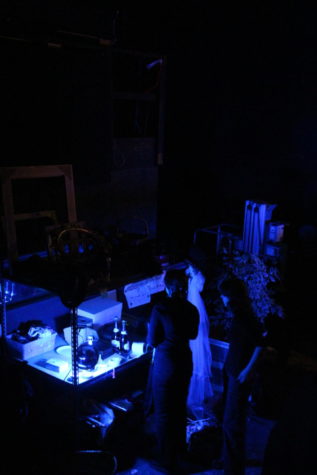
An impressive feat, the success of the rain system impressed audience, cast, and crew alike. Hoverman explained the process behind the rain system, stating, “It is made with three rain barrels, two backstage, and one in the basement under the stage with a sub pump, just like the one in some basements, pumping water up tubes to two pipes hanging from batons. The water then drips down through the deck through a tube into the third barrel in the basement which pumps the water back up to the barrels backstage.”
Fly crew head, Cayliegh Kennelty, also adds, “The rain system has a few parts; the drainage system built into the set, the rain system itself, and the pump that brings the water from barrels on the side of the stage to the system above the stage. Fly crew mainly worked on the part of the system that rained above stage.”
“The PVC pipe has holes that shoot upwards into an upside down gutter that catch it and make the water splatter more and cause it to look more like rain. The water drains into the bottom of the basement and then is reused,” adds fly crew head Moses Bidwell.
Amazing feats in the theater have been pulled off successfully in the past, but this year, construction crew and fly crew truly set a new legacy for the Tosa East players. What they will come up with in the next musical is only a mystery and always a pleasant surprise.
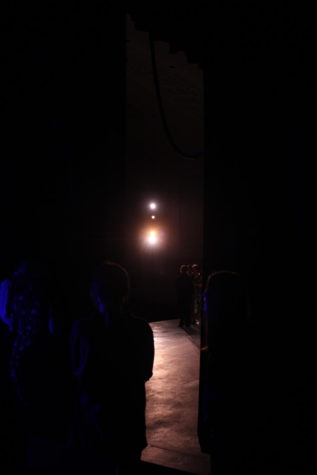
Singin’ in the Rain had further proved the creativity of the students at East; year after year, the shows only get better. With the help of actors and crews working together, a fun and entertaining musical experience was performed for all to see.
“Sometimes, the energy of theater can be a lot, so there are times I need a break. Generally though, it’s very uplifting. People are very supportive of you, and it’s like a big family. I’ve been an emotional wreck through this whole process, all happy tears, and there was a particular moment when I was engulfed in a huge hug by half the cast. I just feel so loved,” said Nielsen.



